Crew 186 Operations Report 03JAN2018
SOL: 03
Name of person filing report: M. Grande
Non-nominal systems: Generator power system
Notes on non-nominal systems:
Bad news followed by good news, so hang in there, please. The generator failed sometime this morning, which was pretty spiteful of it. I went out through the engineering airlock to check that it was still running at 4am and at 6am, mostly out of concern for our HSO/Biologist’s experiment running out in the Science Dome. With a long continuous runtime for the stage of his experiment last night, it was absolutely critical he didn’t lose power, so I wanted to keep a sharp eye on those batteries. At 8:40am, however, after a nice morning yoga session with Kshitij and the crew, the generator read “Failure, Under speed, 8:12 am Jan 03”. And the SOC had dropped critically to 35%. We previously believed that the clock on there was not correct, but still, the generator was off for a maximum of 2:40 hrs while everyone was mostly asleep and very little power was being drawn. So I gave those Solar System batteries a stink eye, because they really quit out on us, dropping like that.
The good news is that the new 9/17 battery showed full charge based on a green light on the charger, and it ran smoothly in the generator all day. (I gave the solar system a day off, despite the sun shining here on Mars.) Additionally, this evening the generator was running almost exactly at the design point! Perfectly 12.0 V, 1800 rpm, and 60.1 Hz. I did switch to the 10/17 battery for tonight again, though, so that I prevent too great of a discharge on the new battery and give it the full night to recharge.
Generator (hours run): (10/17, estimated) 13h; (9/17) 9.7h
Generator turned off, charging battery at 8:00am
Generator turned on at 5:50pm
Solar— SOC
@ 8:40am : 35%
@ 6:25pm : 99%
Diesel: 60%
Propane: 37%
Ethanol Free Gasoline (5 Gallon containers for ATV): 09 Gallons
Water (trailer): 10 Gallons
Water (static): 391 Gallons
Trailer to Static Pump used: No
Water (loft) – Static to Loft Pump used: Yes
Water Meter: 128991.9 Gallons
Toilet tank emptied: Yes
ATVs Used: None
Oil Added? No
ATV Fuel Used: 00 Gallons
# Hours the ATVs were used today: 00:00 hours
Notes on ATVs: Justin and Shannon both took some time today to ride the Yamaha 300 around, as requested by CapCom/Shannon yesterday. We were looking for any sluggishness, especially in changing the gears. It took some coaxing to start it up, Justin said, and the response was delayed as he started driving it around. This effect did decrease as he continued to drive it around, which is a good sign I think. We will make a point to continue to drive it, and I will take it out tomorrow on EVA.
Deimos rover used: Yes
Hours: 97.4
Beginning charge: 100%
Ending charge: 96%
Currently charging: Yes
Sojourner rover used: Assigned to director only.
Hours: 5.1
Beginning charge: 96%
Ending charge: 100%
Currently charging: No
Spirit rover used: Yes
Hours: 8.7
Beginning charge: 100%
Ending charge: 72%
Currently charging: Yes
Opportunity rover used: No
Hours: 4.3
Beginning charge: 100%
Ending charge:
Currently charging: No
Curiosity rover used: No
Hours: 3.1
Beginning charge: 100%
Ending charge:
Currently charging: No
HabCar used and why, where? No
General notes and comments:
Today was a just beautiful EVA day! Amazing views of the lumpy red mesas, endless plains, and even a small box canyon with amazingly sharp stratified layers! I drove one of the Polaris electric rovers for the first time, which was definitely fun, and I appreciate being able to take a longer trip today. But my heart still lies with the ATVs.
In other thrilling Engineering News, I fixed the front door handle with a silicon gun I found in the tool cabinet, emptied the toilet, and added a couple more things to my ‘To Do’ list. The Science Door lock keeps falling apart, so I’ll take a closer look tomorrow morning. I tried checking out the Engineering Airlock door for some loose bolts or bending or something, but unfortunately it is the actual design of that massive door which makes it so darned difficult. So vexing.
Summary of internet: All nominal
Summary of suits and radios: All nominal
Summary of Hab operations: All nominal
Summary of GreenHab operations: All nominal
Summary of ScienceDome operations: All nominal
Summary of RAM operations: Not operational yet!
Summary of health and safety issues: Crew is healthy and well-exercised
Questions, concerns and requests to Mission
Support: Commander Max and I discovered a kink in the fuel line to the generator and also a water leak under the front hab stairs. The water leak does not have a clear source, since the hab is raised, but it does seem to have stopped and dried up a little since yesterday. I’ve attached three photos. Please let me know what you think should be done.


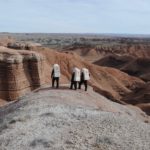
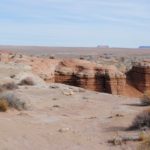
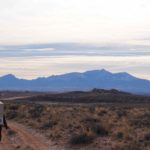
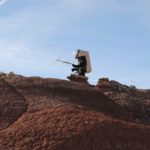
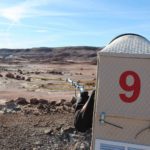
You must be logged in to post a comment.